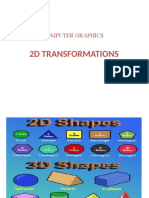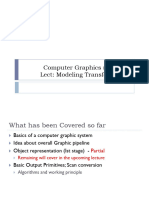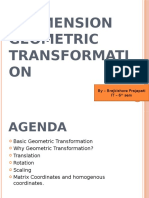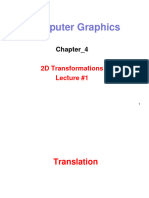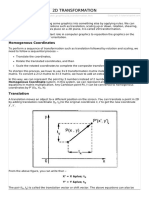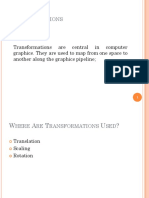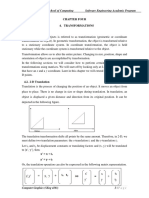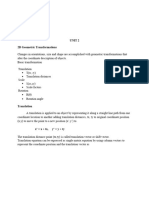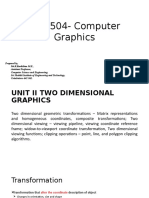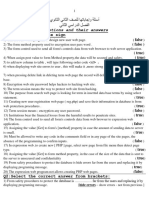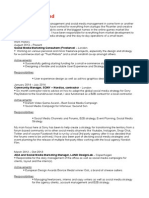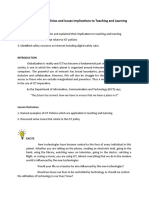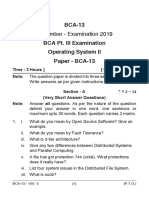0% found this document useful (0 votes)
25 views24 pagesLecture 4 - Transformations
The lecture covers geometric transformations in computer graphics, including translations, scaling, and rotation. Transformations are essential for building scenes and animating objects, represented mathematically using matrices for ease of analysis. The document details the equations and processes for translating, scaling, and rotating points and objects in a two-dimensional space.
Uploaded by
jthan3953Copyright
© © All Rights Reserved
We take content rights seriously. If you suspect this is your content, claim it here.
Available Formats
Download as PDF, TXT or read online on Scribd
0% found this document useful (0 votes)
25 views24 pagesLecture 4 - Transformations
The lecture covers geometric transformations in computer graphics, including translations, scaling, and rotation. Transformations are essential for building scenes and animating objects, represented mathematically using matrices for ease of analysis. The document details the equations and processes for translating, scaling, and rotating points and objects in a two-dimensional space.
Uploaded by
jthan3953Copyright
© © All Rights Reserved
We take content rights seriously. If you suspect this is your content, claim it here.
Available Formats
Download as PDF, TXT or read online on Scribd
/ 24






